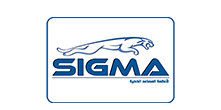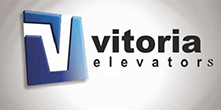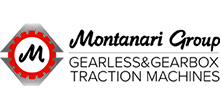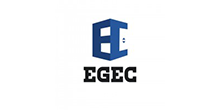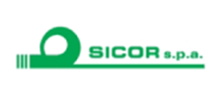Electric elevators can be defined as integrated
mechanical and electrical systems used to transport people or goods between
building floors. They operate using electric motors and steel ropes or
hydraulic systems to lift and lower the cabin. The elevator's movement is
controlled by programmed electronic boards to ensure precise performance and
passenger safety. Below are the main features of electric lifts:
- Comfort:
Electric elevators provide a smooth and comfortable experience, saving
users time and effort.
- Safety:
Elevators are equipped with advanced safety systems to prevent accidents
during use.
- Efficiency:
Elevators enable efficient and smooth movement between floors, reducing
physical effort and time, especially in high-rise buildings.
Applications of Electric Elevators
Electric elevators are used in various buildings,
offices, and institutions. Their type varies based on location and purpose.
Here are some of the common applications:
1. Residential Buildings: Elevators
facilitate movement between floors, especially in high-rise buildings, making
them essential for all users, particularly seniors and people with special
needs.
2. Commercial Offices: Elevators
are crucial in administrative and commercial buildings for efficiently
transporting visitors and employees.
3. Hospitals: Elevators are used to
transport patients between floors. They are designed to meet hospital needs and
are sanitized for the safety of patients and staff.
4. Shopping Malls: Elevators
ease visitors' movement within malls and add an element of attractiveness.
5. Factories and Warehouses: Special
elevators for goods and heavy equipment are essential in factories and
warehouses due to their high load capacity and durability.
6. Home Elevators: These
elevators provide comfort and luxury in homes and increase property value,
attracting buyers.
Types of Electric Elevators
Electric elevators are highly adaptable to meet
various needs, whether residential, commercial, or industrial. Below are the
main types:
1. Traction Elevators: Operate
using a rope and pulley system, driven by powerful electric motors. Commonly
used in high-rise residential buildings, commercial offices, and hotels.
2. Hydraulic Elevators: Use fluid
pressure to move the cabin, suitable for low- to medium-rise buildings,
hospitals, and small commercial centers.
3. Machine Room-Less (MRL) Elevators:
These lack a traditional machine room, with equipment integrated into the
elevator shaft. Ideal for modern residential and small office buildings.
4. Home Elevators: Small
elevators designed for villas and multi-story homes, known for elegant designs
and ease of installation.
5. Panoramic Elevators: Glass-walled
elevators providing panoramic views, used in shopping malls, luxury hotels, and
tourist buildings.
6. Service or Freight Elevators: Built for
transporting goods and heavy loads in factories, warehouses, and large shopping
centers.
7. Capsule Elevators: Feature
futuristic designs and are often installed in building facades for luxury malls
and tourist spots.
8. Emergency Elevators: Designed for
emergencies such as firefighter transport or rapid evacuation in high-rise
buildings and hospitals.
Installation, Operation, and Maintenance
1. Installation:
- Engineering Study: Selecting the best
installation location based on building design and user needs.
- Excavation and Infrastructure: Preparing the
elevator pit and installing columns and supports.
- Mechanical Installation: Installing the
motor, ropes, and pulleys.
- Electrical System Setup: Connecting control
panels and electrical systems for proper operation.
- Safety Testing: Ensuring compliance with
global safety standards before operation.
2. Operation Control:
- Control Panels: Manage movement, speed, and
door operations.
- Safety Systems: Include emergency stops and
automatic brakes.
- Remote Control: Utilize modern technologies
for remote elevator operation via apps or smart devices.
3. Maintenance and Repair:
- Diagnostics: Using advanced tools to
identify and fix issues.
- Common Repairs: Addressing cabin
malfunctions, slow movement, or control panel issues.
- Component Replacement: Using original parts
to ensure quality and longevity.
- Preventive Maintenance: Cleaning components,
inspecting ropes, and lubricating mechanical parts to avoid future issues.
Understanding the types and maintenance of electric
elevators ensures optimal performance, safety, and efficiency for users.
Electric Elevator Maintenance
To ensure electric elevators operate efficiently and
safely, their components must be properly maintained. Below are the key
maintenance procedures for all types of electric elevators:
1. Inspection of the Elevator’s Core Components
- Regular inspections should include all major
parts, such as the motor, safety straps, cables, doors, and control
system.
- The motor should be inspected for leaks or
mechanical issues.
- Cables must be checked to ensure there are
no signs of wear or damage.
2. Electrical System Maintenance
- Inspect the elevator's electrical system,
including the control panel and switches, to ensure they are operating
correctly.
- Check the wiring to ensure it is not damaged
or exposed.
- Ensure that all electrical devices are free
of defects that could impair elevator performance.
3. Door and Safety Systems Inspection
- Ensure the elevator doors are functioning
properly, whether automatic sliding doors or manually operated ones.
- Confirm that safety systems such as
emergency stop buttons, alarms, and door sensors are operating
effectively.
4. Lubricants and Paints
- Regularly add lubricants and paints to
movable components like motors and brake cylinders to minimize friction
and maintain elevator efficiency.
- Check oil levels and ensure there are no
underlying mechanical issues.
5. Periodic Testing & Corrections
- Regular testing is essential to ensure that
the elevator is functioning properly.
- If problems are detected, corrective action
must be taken immediately, such as adjusting the elevator's speed or
inspecting safety systems.
6. Preventive Maintenance
- Preventive maintenance involves
regular checks of all elevator components to detect and resolve issues
before they escalate.
- This approach reduces unexpected
breakdowns, extends the elevator's lifespan, and minimizes costly repairs.
Factors Affecting Electric Elevator Prices
Several factors influence the cost of electric
elevators:
1. Elevator Dimensions & Special Requirements
o
Smaller
elevators with limited capacity are less expensive compared to larger models
requiring custom designs.
o
The cost can
also vary depending on the number of passengers or weight capacity.
2. Elevator Installation
o
Installation
costs depend on the building type and the need for any structural
modifications.
o
Adding
elevators to older buildings may incur additional costs due to structural
reinforcements.
3. Type of Elevator & Technology Used
o
Hydraulic vs.
electric elevators or newer modern options (e.g., rope-free systems) will vary
in price based on technological complexity.
4. Spare Parts Costs
o
Imported or
high-quality parts may significantly raise maintenance costs.
o
Conversely,
elevators using locally sourced parts can lower overall costs.
5. Post-sale Services
o
Ongoing
maintenance services such as periodic checks and spare parts replacement can
impact costs.
6. Geographic Location
o
Accessibility
challenges or regional taxes can add costs to installation and operation.
Elevator Spare Parts Catalog
The elevator spare parts catalog serves as a vital
reference tool for technicians and contractors, offering:
- Ease of Information Access:
Detailed, categorized data for mechanical, electrical, and electronic
components.
- Faster Maintenance:





